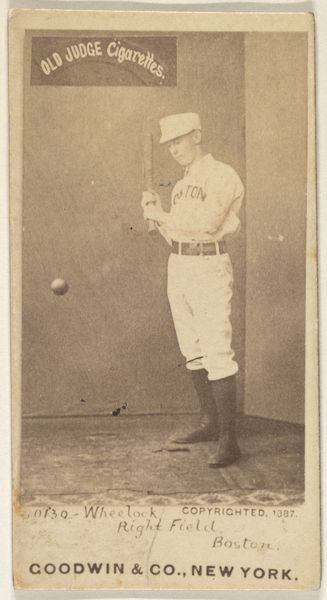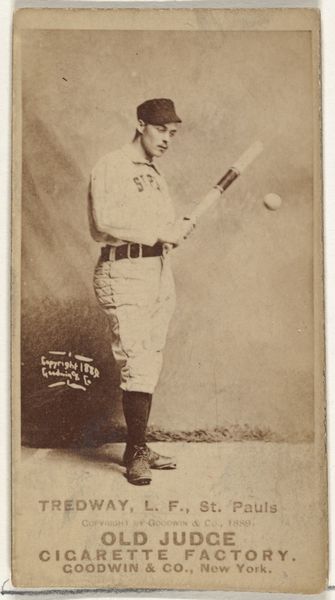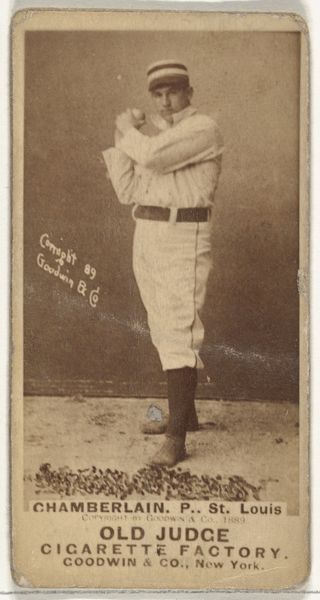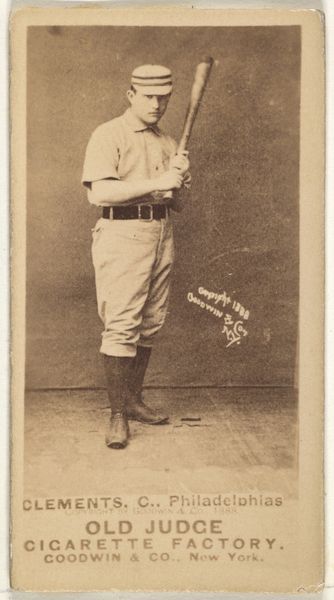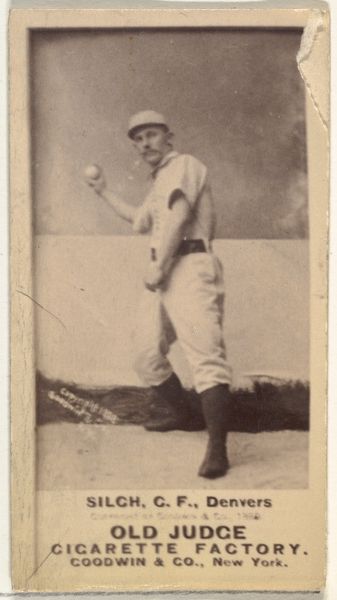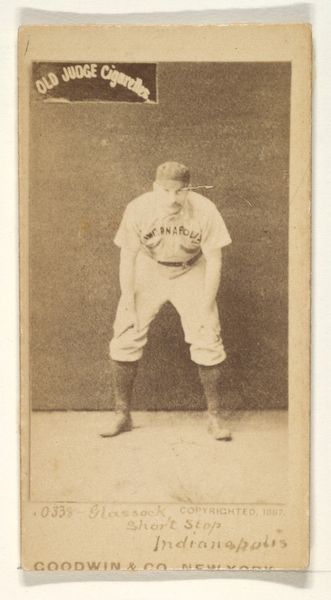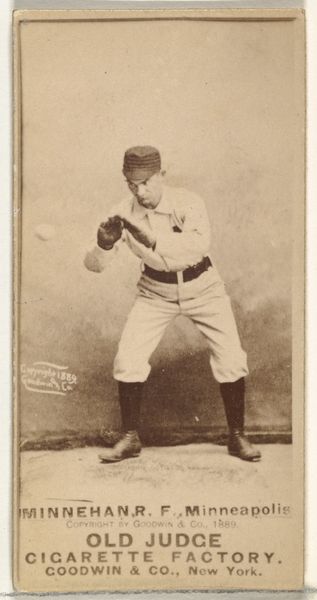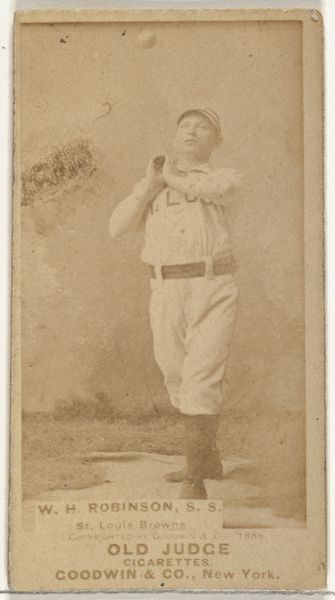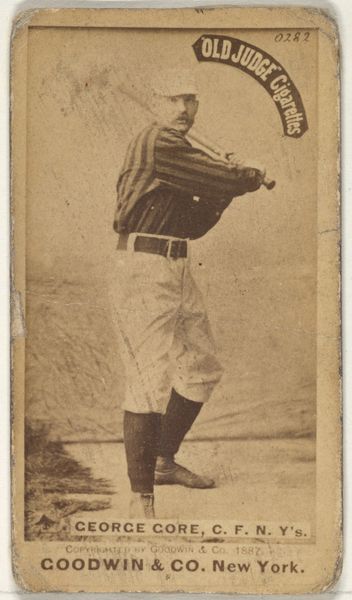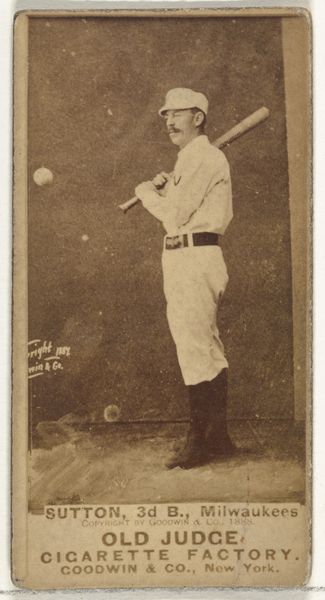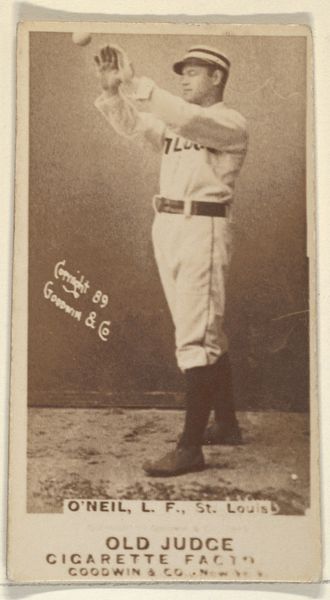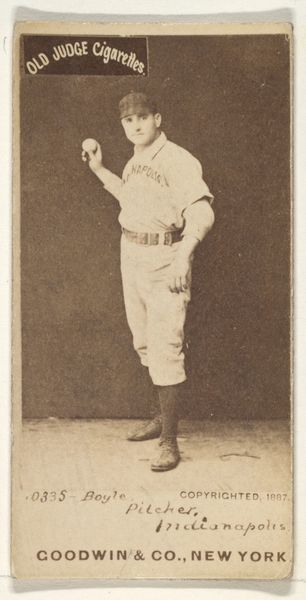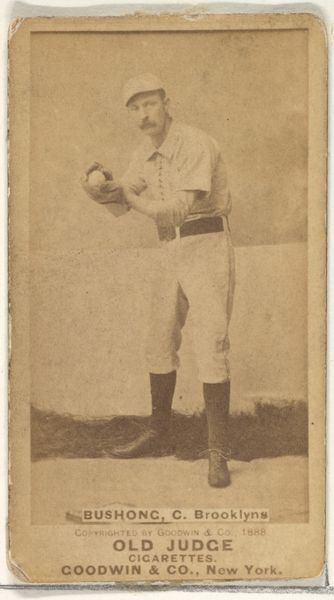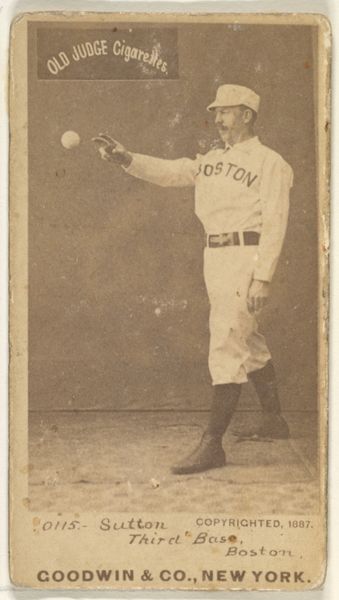
Charles Edward "Charlie" Duffee, 2nd Base, St. Louis Browns, from the Old Judge series (N172) for Old Judge Cigarettes 1889
0:00
0:00
drawing, print, photography
#
portrait
#
drawing
# print
#
baseball
#
photography
#
men
#
genre-painting
#
athlete
Dimensions: sheet: 2 11/16 x 1 3/8 in. (6.9 x 3.5 cm)
Copyright: Public Domain
Curator: Goodwin & Company's print, created in 1889, showcases Charles Edward "Charlie" Duffee, the second baseman for the St. Louis Browns. These baseball cards were originally produced to be included in packs of Old Judge Cigarettes. Editor: I gotta say, this card gives me a real sepia-toned nostalgia hit! He’s got that look of concentration... that old-timey baseball uniform...it just radiates focus. It makes you wonder about his story, beyond the stats. Curator: Context is everything, right? The "Old Judge" series and others like it reflect how sports, advertising, and consumption intertwined in the late 19th century. Baseball, particularly, was gaining widespread popularity, and businesses saw these athletes as effective spokespeople. This points to evolving understandings of masculinity and athleticism being linked to particular brands. Editor: So, in a way, Charlie Duffee wasn’t just playing baseball; he was also endorsing a lifestyle… although I'm sure he wasn't puffing away himself mid-game. Imagine chewing tobacco or holding a cigarette and trying to make that catch. No thanks! Curator: Precisely. The photograph also highlights the racial segregation inherent within baseball and other sporting events during that era, particularly during the Reconstruction era. Duffee represents the idealized version of American masculinity but actively excludes people of color. It creates a dichotomy, even today, when we consume memorabilia, that demands analysis. Editor: It's true that even in something as seemingly straightforward as a baseball card, you uncover a pretty complex commentary about identity. It makes you question how consumerism, race and nostalgia still collide in interesting, and sometimes unsettling ways, in sports today. A simple card reveals a complicated story. Curator: Exactly. When we look closely at historical materials like these, they reveal far more than what they initially present. These "artifacts" become portals into social hierarchies that still shape how we think about sport, identity, and nationhood. Editor: And hey, next time I'm at a game, maybe I'll see a hidden critique of capitalism staring back from some fan’s vintage jersey! I think there's more lurking beneath these surfaces if we are prepared to scratch beneath them.
Comments
No comments
Be the first to comment and join the conversation on the ultimate creative platform.
